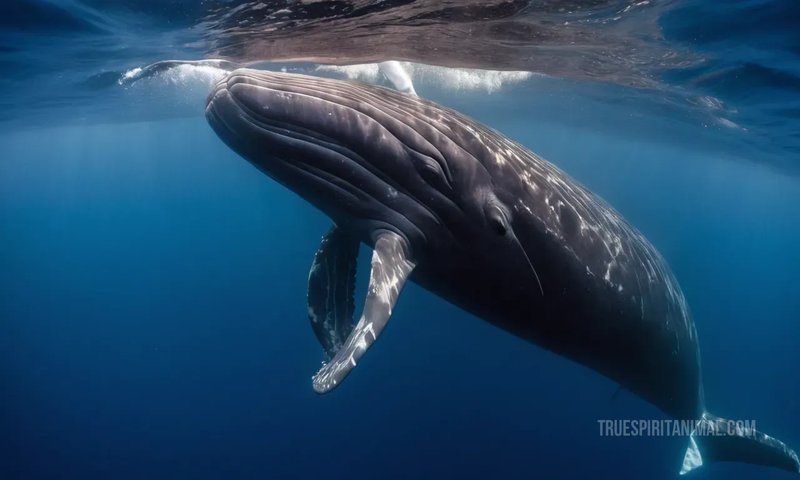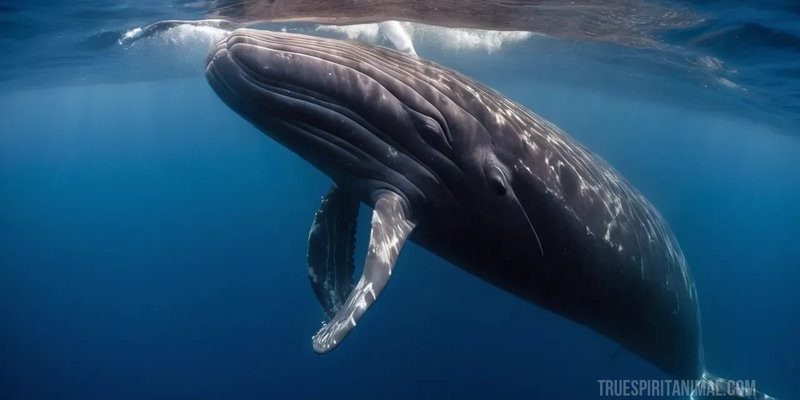
Imagine sitting at a café, sipping your favorite brew, and chatting about whales. You might wonder why cultures across the globe revere sperm whales so deeply, attributing extraordinary traits to them. From tales of their intelligence to legends about their size and behavior, the sperm whale has become a canvas for our imaginations. Some stories are simply fascinating, while others reveal how our relationship with nature shapes our beliefs. So, let’s explore the myths and cultural narratives surrounding the sperm whale, drawing from ancient lore to modern perspectives.
The Size and Strength of the Sperm Whale in Mythology
One of the most striking features of the sperm whale is, of course, its size. These giants can grow up to 60 feet long and weigh as much as 45 tons! It’s no wonder that ancient cultures viewed them as symbols of strength and power. In many legends, sperm whales are portrayed as sea deities or guardians of the ocean, capable of protecting sailors from tempests or guiding lost ships back to shore.
In Moby Dick, Herman Melville famously depicted the sperm whale as an almost mythical creature, embodying both the beauty and terror of the sea. Here’s the thing: such tales aren’t just fiction; they reflect the awe and respect these creatures inspire. Sailors would often invoke the might of the sperm whale to give them courage during treacherous voyages. This blending of reality and myth speaks volumes about humanity’s enduring fascination with the ocean’s depths.
Culturally, different societies have celebrated the sperm whale in their art and storytelling. For instance, in some Polynesian cultures, they are considered sacred animals, representing bravery and endurance. Instead of viewing them as mere beasts of the sea, these communities have woven them into the very fabric of their identity.
The Sperm Whale’s Intelligence: Fact vs. Fiction
If you’ve ever heard the saying, “Wise as an owl,” you might be surprised to know that the sperm whale could easily take its place in the ranks of intelligent animals. These whales possess the largest brain of any animal on Earth, which has led to many tales of their intelligence. Some cultures believe that sperm whales have a sixth sense, allowing them to communicate with one another in ways that humans can hardly fathom.
Interestingly, scientists have discovered that sperm whales communicate using a series of clicks and whistles, revealing that they indeed have complex social structures. This has fueled the imagination of many, leading to stories of whales as telepathic beings, capable of reading the emotions of those around them. Can you picture that? It adds a touch of wonder to the idea of these majestic creatures swimming through the vast blue.
However, while the notion of their “supernatural” intelligence is fascinating, it’s important to remember that their communication skills are rooted in biology and evolution. They’ve adapted to their environments, developing behaviors that ensure their survival. Honestly, understanding their intelligence enhances our appreciation of them rather than turning them into mythical creatures.
Folklore and Legends About Sperm Whales
Across the globe, tales of sperm whales have found their way into folklore. In Norse mythology, for example, they were believed to be the spirits of fallen warriors. The image of a sperm whale leaping through the waves was often viewed as a sign that a warrior’s spirit was riding the tides, watching over their loved ones.
In many coastal communities, sperm whales were regarded as omens. If a whale was sighted, it was thought to forecast either good fortune or impending peril. This belief highlights our tendency to interpret natural phenomena as reflections of our fate. Here’s the thing: these legends often served practical purposes too. Sailors and fishermen would recount stories of the whales, using them to bond and build camaraderie before venturing out to sea.
Over time, these tales have evolved. In modern culture, the sperm whale is often featured in literature and film, from educational documentaries to fantasy stories. As we piece together our understanding of these magnificent creatures, they continue to inspire our imaginations, serving as a reminder of the mysteries that lie beneath the waves.
The Sperm Whale in Art and Literature
Art has always played a significant role in shaping our perceptions of the sperm whale. From classic paintings to contemporary digital art, these whales have become powerful symbols in various artistic expressions. Think about it: can you picture the majestic image of a sperm whale gracefully gliding through the ocean, its enormous head poking through the water?
In literature, the sperm whale is often depicted as both a protagonist and antagonist. Melville’s Moby Dick is an iconic example, where the whale symbolizes nature’s power and unpredictability. This story dives into the relationship between humans and the natural world, showcasing our struggle to understand and coexist with these creatures.
Contemporary artists continue to draw inspiration from sperm whales, emphasizing their plight in the face of modern challenges like climate change and whaling. These artistic portrayals spark conversations about conservation and the importance of protecting our oceans. By connecting the sperm whale to current issues, artists help keep these legends alive while advocating for their future.
Scientific Perspectives on Sperm Whales
While myths and cultural beliefs give us fascinating insights into our relationship with sperm whales, science offers a different lens. Researchers have spent decades studying these animals, unraveling their behaviors, social structures, and communication methods. Sperm whales are known to dive deep—some reaching depths of over 10,000 feet—to hunt for squid. This ability showcases their incredible adaptation to life in the ocean’s depths.
Interestingly, research has revealed that sperm whales are highly social creatures, often forming tight-knit family groups known as pods. These pods are usually matriarchal, meaning they are led by older females. It’s fascinating to consider that these whales are not just solitary giants; they have complex social lives reminiscent of our own. The bonds they form provide insights into their intelligence and emotional connections.
In conclusion, studying the sperm whale helps us separate fact from fiction. While myths enrich our understanding and appreciation of these majestic animals, scientific research brings clarity to their behaviors and experiences. Both perspectives are essential in fostering a comprehensive view of these incredible marine beasts.
Conservation Challenges and Cultural Significance
As we explore the myths and beliefs surrounding sperm whales, it’s crucial to acknowledge the real-world challenges they face. Commercial whaling, climate change, and habitat loss pose significant threats to their populations. Despite their cultural significance, many people remain unaware of the dire situation these creatures are in.
Efforts to conserve sperm whales often draw on their cultural stories and significance. Organizations work to educate communities about the importance of protecting these animals while celebrating their role in folklore. By bridging the gap between science and culture, we can engage people more deeply, fostering a sense of ownership and responsibility toward their conservation.
This cultural connection helps create a sense of urgency around conservation efforts. When people see the sperm whale not only as a majestic creature but also as a part of their cultural heritage, they’re more likely to advocate for their protection.
Wrapping Up: The Enduring Legacy of the Sperm Whale
The myths and cultural beliefs surrounding the sperm whale are as deep and rich as the oceans they inhabit. From depicting these giants as powerful deities to attributing deep intelligence and wisdom to them, our stories reflect our fascination with nature. At the same time, the scientific insights we’ve gained help ground these narratives in reality.
As we continue to tell their stories, let’s also commit to protecting sperm whales and their habitats. By doing so, we honor not only their legacy but also our own connection to the incredible tapestry of life beneath the waves. After all, each time we learn about these magnificent creatures, we strengthen the bond between humanity and the ocean.

